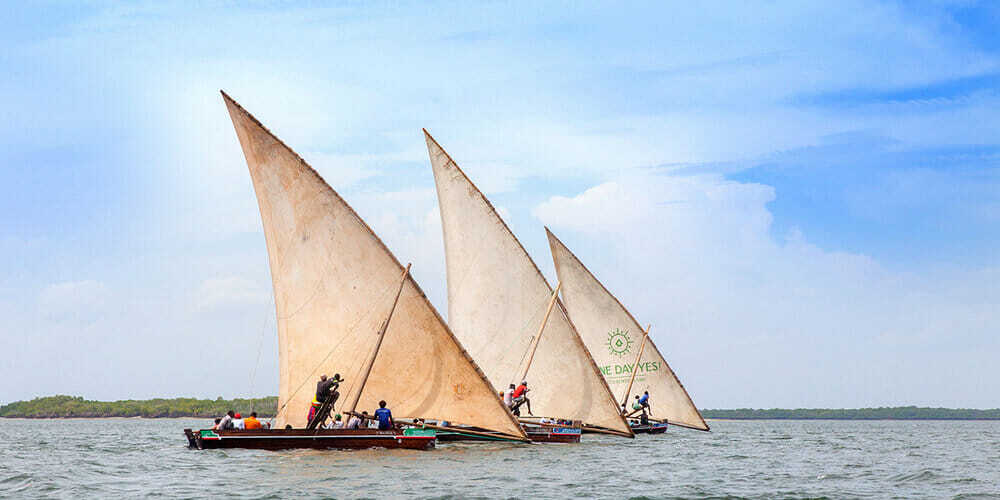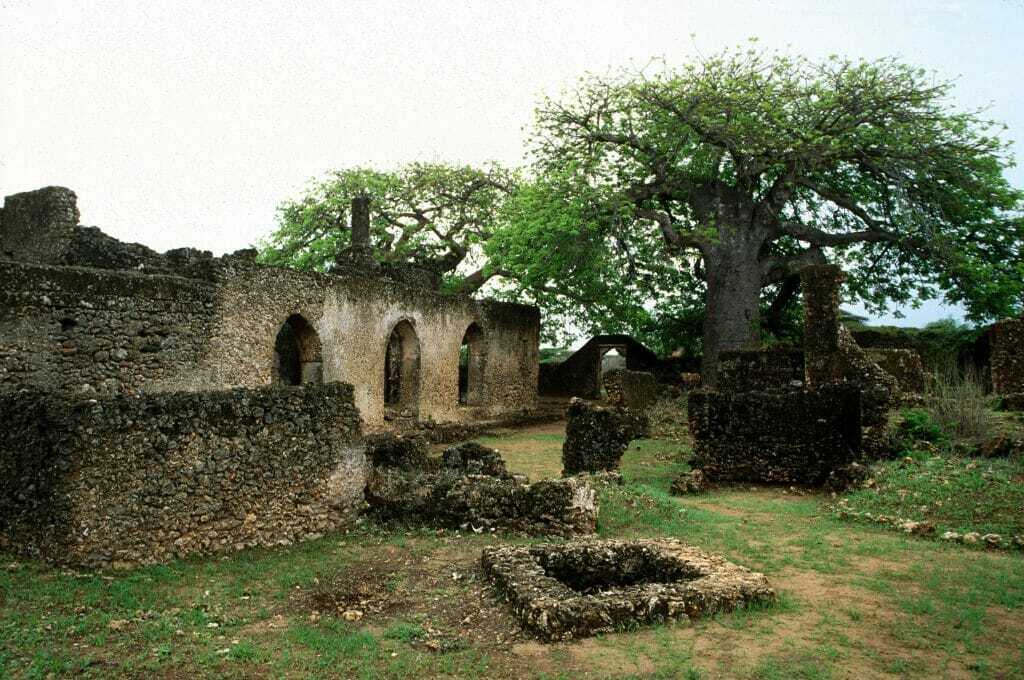The 7 Best things do to in Lamu
If you’re planning to see all the different facets Kenya has to offer, then Lamu has to be on your list. It’s filled with a lot of history and ancient Swahili culture that has its own special charm!
First off, what is Lamu and why is it so special?
Lamu is a charming island off the coast of Kenya, where long-standing customs and pristine scenery come together to make an outstanding vacation spot. In the middle of breathtaking natural scenery, Lamu is a place where time appears to have stopped. There, the rich Swahili cultural history is preserved.
This East African treasure is for anyone looking for an authentic and immersive Swahili experience with its immaculate beaches, majestic architecture, and gracious hospitality.
I’ve outlined below some of the best things to do on the island, so let’s dive right in, shall we?
1. Take a stroll through Lamu Old Town

With centuries of history, Lamu Town has seen many changes, and its peculiar fusion of African, Arab, and Indian elements has molded its distinct personality. The town, which was established in the 14th century, has a fascinating history as a significant trading hub along the Indian Ocean trade routes. You’ll be amazed by the gorgeous Swahili architecture that is ornamented with elaborate wooden doors, graceful arches, and delicate balconies, exhibiting the town’s architectural splendor, as you stroll through Lamu Old Town.
Since 2001, Lamu Old Town has been designated as a UNESCO World Heritage Site. This distinction recognizes its exceptional cultural importance and the necessity to safeguard its distinctive architecture and traditions for upcoming generations. The carved wooden doors, graceful archways, and beautiful balconies are examples of the town’s intriguing fusion of African, Arab, and Indian influences. Being surrounded by the town’s timeless beauty while strolling through Lamu’s winding streets gives the impression of traveling back in time.
Furthermore, one of the most distinctive features of Lamu Town is its lack of motorized vehicles. The absence of cars and motorcycles contributes to a peaceful, laid-back atmosphere, making it an ideal destination for relaxation and a chance to escape the hustle and bustle of modern life.
2. Visit Lamu Museum to learn about the island’s history and culture

The Lamu Museum is a place of rich culture on the island. The museum houses a collection of the island’s extensive history, cultural legacy, and maritime customs. It is set in a gorgeously restored Swahili structure that displays the unique architectural design of the island.
The Lamu Museum plays a vital role in preserving and promoting the cultural identity of Lamu, which is recognized as a UNESCO World Heritage Site. Through its exhibits and artifacts, the museum offers visitors a glimpse into Lamu’s past as a prosperous trading center along the Indian Ocean coast and an important hub for commerce and cultural exchange.
A wide variety of archaeological artifacts, traditional crafts, outfits, musical instruments, and maritime artifacts are on display at the museum, all of which contribute to telling the tale of Lamu’s rich past and the Swahili people’s way of life. It also sponsors cultural gatherings and festivals that honor the island’s history and provides guests with a chance to take in traditional music, dance, and other forms of cultural expression.
For tourists and history buffs interested in learning more about Lamu’s enduring appeal and its distinctive fusion of African, Arab, and Indian elements, Lamu Museum is a must-visit location. Furthermore, the museum’s conservation activities help save Lamu’s cultural heritage for upcoming generations. However, it is advised to check with local sources or the museum’s official website for the most recent information regarding the museum and its exhibits.
3. Explore the local markets and shops

Local crafts are important in conserving and honoring the traditions of Lamu Island, which is known for its rich cultural legacy. Each of the gorgeous and carefully created products made by Lamu’s talented craftspeople reflects the island’s distinctive fusion of Swahili, Arab, and Indian influences. The following are some of the intriguing local crafts available in Lamu:
Here are some of the local crafts you’ll need to check out!
The island is well famous for its beautiful woodcarvings, which feature intricate patterns and designs. Beautiful wooden doors with intricate carvings are made by skilled artisans and are a defining characteristic of the island’s architecture. Additionally, you can find wooden furniture, decorations, and sculptures that showcase the craftsmanship of Lamu’s woodcarvers.
The Handwoven mats are emblematic of Lamu’s skill. These mats, which are made from organic materials like palm leaves or doum palm fronds, are used for a variety of things, including flooring in traditional Swahili homes and as decorative items.
The kofia is a traditional Swahili cap, handwoven from palm or banana fibers. It is worn by men and is an essential part of their cultural attire. Kofias are available in various colors and patterns, each representing different occasions or social status.
Siwa charms are talismanic ornaments believed to bring protection and good luck. Crafted from metal, bone, or stone, these charms are often incorporated into jewelry, such as necklaces, bracelets, and earrings. The jewelry pieces often feature traditional Swahili designs and symbols.
4. Relax at Shela Beach

On Lamu Island in Kenya, Shela Beach is a hidden piece of beauty.
Imagine the turquoise seas of the Indian Ocean embracing the powdery white dunes that feel like silk under your feet.
It’s the ideal area for lounging in the sun, having a picnic with friends, and dipping your toes in the calm water.
You’ll find yourself losing track of time as you lose yourself in the sound of the waves because of the place’s relaxed atmosphere. Shela Beach is the place to go whether you’re searching for a quiet getaway or some beachy escapades.
5. Take a dhow (traditional sailing boat) trip to explore nearby islands

Taking a dhow ride in Lamu is an enchanting experience that transports you back in time to the island’s seafaring past. These traditional wooden sailing boats, with their billowing white sails, gracefully glide over the azure waters of the Indian Ocean, offering a sense of serenity and adventure.
The dhow’s seasoned crew skillfully navigates the waters, taking you on a captivating voyage to explore the surrounding islands and hidden coves.
Whether it’s a serene sunset cruise, a snorkeling expedition to discover vibrant marine life, or a visit to neighboring Manda Island, the dhow ride in Lamu promises an unforgettable encounter with the island’s maritime legacy and an opportunity to witness the natural beauty of the Lamu Archipelago from a time-honored vantage point.
6. If your visit coincides with the Lamu Cultural Festival, take part in the festivities celebrating Swahili culture, music, and dance

The Lamu Cultural Festival is a vibrant celebration that encapsulates the essence of Lamu’s rich heritage and cultural diversity. Held annually on Lamu Island, Kenya, this colorful festival showcases the island’s traditional Swahili culture through a kaleidoscope of music, dance, art, and spirited festivities.
During the festival, the historic Lamu Old Town comes alive with the sounds of taarab music and rhythmic Swahili dances, drawing both locals and visitors into a joyous and harmonious atmosphere.
The festival features traditional dhow races, henna artistry, and donkey races, and showcases the island’s culinary delights, including delectable Swahili dishes.
It’s an occasion for the community to come together and share pride in their cultural identity while warmly welcoming guests to partake in the island’s timeless allure.
The Lamu Cultural Festival offers a captivating insight into the island’s customs and traditions, providing a memorable experience that celebrates the living heritage of Lamu.
7. Discover the 14th-century Swahili ruins on nearby islands, like Takwa Ruins on Manda Island

The 14th-century Swahili ruins on Lamu Island offer a fascinating glimpse into the island’s storied past.
These ancient ruins, dating back to the 14th century, are a testament to Lamu’s historical significance as a thriving trading center along the East African coast. As you explore the remnants of these once-thriving settlements, you’ll be transported to an era of bustling commerce and cultural exchange.
The ruins, often found on neighboring islands like Manda, Pate, and Siyu, showcase the architectural prowess of the Swahili people with their distinctive coral stone structures and intricately carved designs.
Strolling through the time-worn walls, you’ll feel a sense of awe at the resilience of these ancient communities and the enduring legacy they left behind. These Swahili ruins are not just remnants of a bygone era, but they are also a window into the island’s cultural heritage, connecting visitors to the vibrant history that shaped Lamu and the surrounding region.
So after putting together this comprehensive guide, is Lamu actually worth it?
Personally, I’d say yes!
What’s great about Kenya is that you can visit different coastal destinations for different purposes. If you’d like a vibrant atmosphere with a good selection of bars and nightlife options, I’d recommend going to Diani Beach or Mombasa.
If you are more into kitesurfing, scuba diving, and a more quiet and intimate environment, Watamu is the place for you!
Lastly, if you just want to be in complete zen mode, have lots of options to do yoga, or want to be away from cars and watch the sunset on a cozy dhow ride, then Lamu is the place to be. So to sum up, if you haven’t yet experienced the magic of Lamu, then make sure to see the island before you leave.






